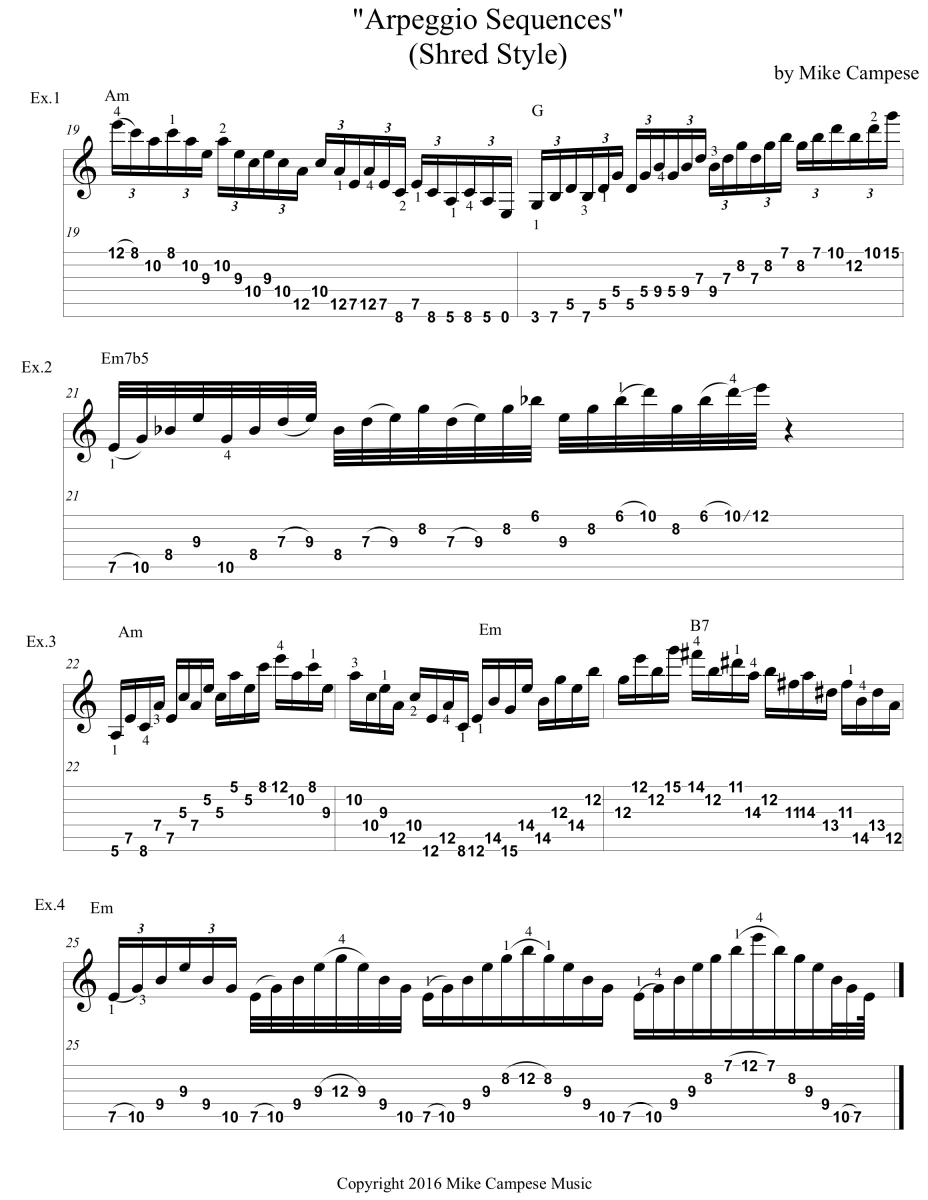Welcome back! In this lesson I will be showing you some arpeggio sequences that I like to use in my playing; this technique will help spice up your solos, instead of just running up and down arpeggios. These sequences in this lesson will work great in any style of music; they sound great in a shred guitar style environment and they can be played fast or slow. You may hear some of these sequential ideas used typically in classical music, something a violinist may play, for example.
Also, these sequences are really great for your technique and they can be applied to any arpeggio. For this lesson, I mainly used some simple arpeggios just so you can get the basic concept. Let's begin.
Example 1 is a 3-note sequence that is played using 16th note triplets and it is moving through 2 arpeggios, A minor (A, C, E) and G Major (G, B, D). This 3 note sequence you will typically see applied to scales, but it sounds cool with arpeggios as well. Be sure to take it slowly and precisely; you can alternate pick this, or use sweeping, and I prefer to alternate pick this.
MP3 - Arpeggio Sequences - Example 1
Example 2 is a 4 note sequence moving through a Em7b5 arpeggio, (E, G, Bb, D). For this example, I use some hammer-ons and sweep picking combined to play it really fast. I will alternate pick this as well, depending on how I want it to sound. I don't always sweep arpeggios - picking them can create a more rhythmic feel. Also, this sequence can be applied to any arpeggio.
MP3 - Arpeggio Sequences - Example 2
Example 3 is an arpeggio sequence that is not as common as the other ones I showed you, perhaps more popular in classical music, and is something that a violinist will play. Basically, you play the first note of the arpeggio, skip the second note, play the 3rd note and then play the 2nd note, skip the 3rd note and play the 4th note. For example, A - E, C - A, E - C, etc and it is easier to understand when you play it on the guitar, you can hear how the pattern is going. I applied this sequence to the chord progression, Am, Em, and B7 and this works with any arpeggio. Also, I alternate pick this whole example.
MP3 - Arpeggio Sequences - Example 3
Example 4 is a cool sweeping E minor arpeggio sequence that sounds great, blazing fast off of the 5th string. The concept behind this is, on each beat, the pattern is moving up to each chord tone and back down to the original note you played. For example, first you play up to the root an octave higher and then you go back down to the original note E, then you play up to the b3rd, which is G, then back down to E, etc. This works with any arpeggio and you may want to follow the suggested fingerings. The way I did it here is quicker for me and you can experiment with the fingerings if you like. I arranged the notes in this arpeggio so it would be a little less chord like, which will help it sound more separated, and when you are sweeping correctly the notes have to separated or it can sound messy.
MP3 - Arpeggio Sequences - Example 4

OK, that is it for now. As always, make up your own examples and don't forget to visit www.mikecampese.com for the latest news, and to preview and purchase my new album "Chapters", as well as other merchandise.
Mike Campese is an all-around music performer, session artist and teacher competent in many musical styles, electric and acoustic. He has studied at G.I.T. (Honors Graduate), and with Paul Gilbert, Norman Brown, Stanley Jordan, Scott Henderson and Keith Wyatt.